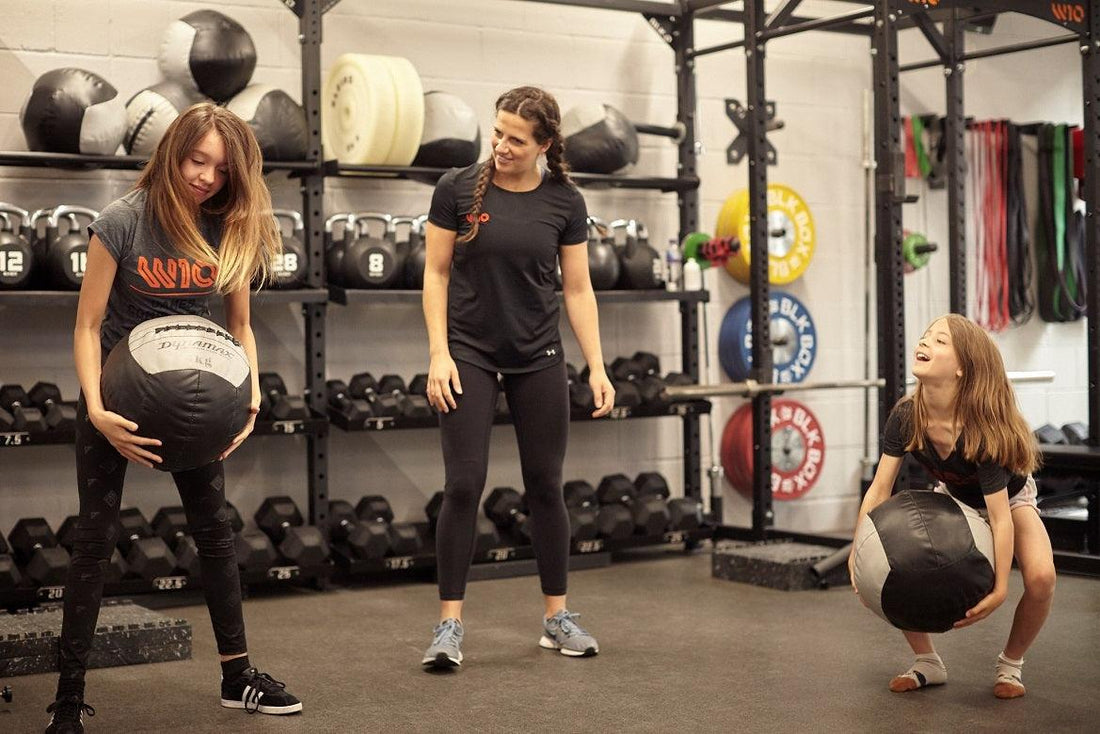
Strength Training 101: (for Parents & Kids)
Share
Strength Training 101: How to Get Started (for Parents & Kids)
strength training exercises for kids. Your child can do many strength training exercises with his or her own body weight or resistance bands.

Strength training for beginners
What Is Strength Training?
Strength training (also called resistance training) is a way to build muscles and strength using free weights, kettlebells, weight machines, resistance bands, or a person's own weight. Kids and teens may want to strength train to improve sports performance, treat or prevent injuries, or improve appearance.
What Are the Benefits of Strength Training?
Strength training can help kids and teens build strong muscles. With a well-designed and supervised program, they can:
- improve overall fitness and sports performance
- increase lean body mass (more muscle, less fat)
- burn more calories
- make bones stronger
- improve mental health
Who Can Do Strength Training?
It's difficult to say when kids should begin strength training. Children of the same age can have very different skills and maturity levels. In general, kids and teens who are ready to participate in organized sports can begin some kind of of resistance program. Young children can begin with bodyweight exercises such as hopping and jumping.
A child's strength-training program should not be a simplified version of an adult's weight-training routine. Children should be taught proper technique, be supervised, have access to child-sized machines and equipment, and understand how to use it safely.
Trainers who work at schools, gyms, and in weight rooms know about strength training. But look for someone who is a certified strength-training expert and who has experience working with kids and teens.
Is Strength Training Safe?
Strength-training programs are generally safe. When done properly, strength training won't hurt growing bones.
As with any sport, talk to your doctor before letting your child start a strength-training program. Kids and teens with some medical conditions — such as uncontrolled high blood pressure, seizures, heart problems, and other conditions — need their doctor's OK before they start strength training.
Also, your child should be closely supervised and using the right equipment and proper technique.
When lifting weights or kettlebells, the best way to learn proper technique is to do the exercises without any weight. When technique is mastered, weight (or resistance, if using exercise bands) can be added, as long as your child can comfortably do the exercise for 8–12 repetitions with good form. Kids should not use machines and equipment designed for adults.
Most injuries happen because a child was goofing around and not supervised. Muscle strains are the most common injury associated with strength training.
Some young and professional athletes try anabolic steroids and other performance enhancers to build muscles and improve athletic performance and appearance. Talk to your child about the dangers of using these drugs.
What's a Healthy Routine?
Kids and teens interested in building strength should start with light weights (or resistance) and one or two sets of 8–12 repetitions rather than lifting a heavy load once or twice.
The amount of weight will depend on a child's age, size, form, experience, and strength level. In general, if someone can't lift the weight comfortably and with proper technique at least 8 times, the weight is too heavy.
Preteens can get stronger without adding muscle bulk, which won't happen until after they've gone through puberty. After puberty, the male hormone testosterone helps build muscle in response to weight training. Boys have more testosterone than girls do, so they get bigger muscles.
The focus of each training session should be on proper form and technique, with qualified instruction and supervision.
Strength Training Program Guidelines
Here are some guidelines when considering strength-training programs:
- Choose programs with appropriate instructor-to-child ratios. Younger children with no experience will need more attention than teen athletes who have been training for years.
- The instructor should have an approved strength-training certification and experience with kids and strength training.
- Warm up with at least 5–10 minutes of aerobic activity and dynamic stretching. Cool down with less intense activity and static stretching.
- Begin with one or two sets of 8–12 repetitions exercises that focus on the major muscle groups of the upper and lower body and core.
- Kids can start with body weight exercises (such as sit-ups, push-ups, and squats) and work on technique without using weights. When they've learned proper technique, they can use a relatively light free weight or low-resistance bands. Increase the weight, number of sets, or types of exercises gradually as their strength improves.
- For best results, they can do strength exercises for at least 20–30 minutes 2 or 3 days per week. They should take at least a day off between sessions.
Strength training is one part of a total fitness program. Kids and teens should get at least 1 hour a day of moderate to vigorous physical activity every day, including aerobic (cardio) activity, like running, biking, and playing outside. Also, be sure you child drinks plenty of liquids and eats a healthy diet for better performance and recovery.
